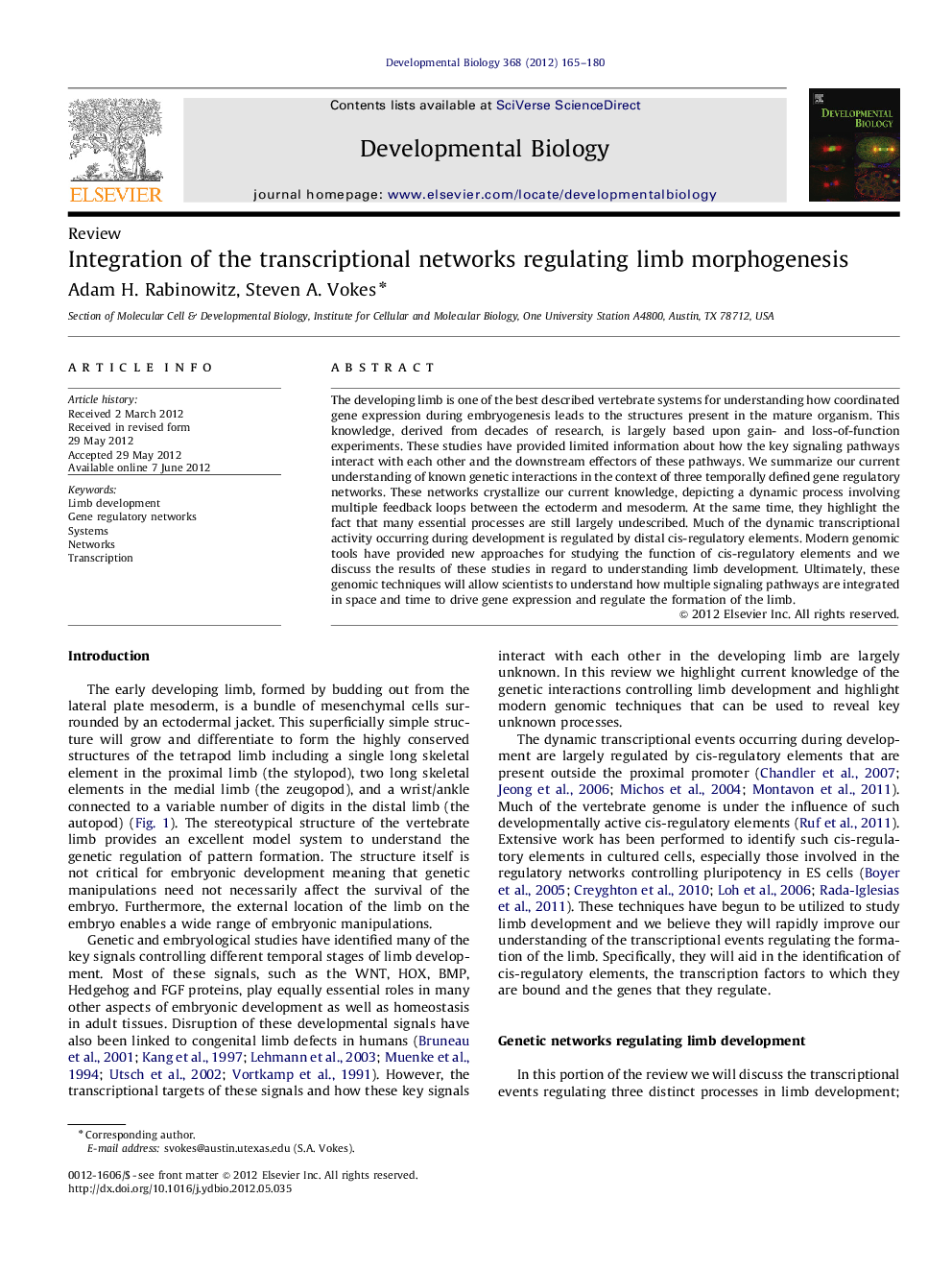| Article ID | Journal | Published Year | Pages | File Type |
|---|---|---|---|---|
| 2173361 | Developmental Biology | 2012 | 16 Pages |
The developing limb is one of the best described vertebrate systems for understanding how coordinated gene expression during embryogenesis leads to the structures present in the mature organism. This knowledge, derived from decades of research, is largely based upon gain- and loss-of-function experiments. These studies have provided limited information about how the key signaling pathways interact with each other and the downstream effectors of these pathways. We summarize our current understanding of known genetic interactions in the context of three temporally defined gene regulatory networks. These networks crystallize our current knowledge, depicting a dynamic process involving multiple feedback loops between the ectoderm and mesoderm. At the same time, they highlight the fact that many essential processes are still largely undescribed. Much of the dynamic transcriptional activity occurring during development is regulated by distal cis-regulatory elements. Modern genomic tools have provided new approaches for studying the function of cis-regulatory elements and we discuss the results of these studies in regard to understanding limb development. Ultimately, these genomic techniques will allow scientists to understand how multiple signaling pathways are integrated in space and time to drive gene expression and regulate the formation of the limb.
► Systematic review of the key signaling pathways regulating limb morphogenesis. ► Generation of genetic networks depicting known genetic interactions in the limb. ► Exploring the functional role of enhancer elements within the developing limb.
